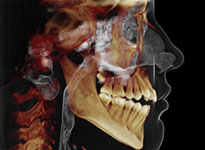Airway-Mindful Orthodontics
Orthodontic problems are sometimes intermingled with airway and sleeping problems. Orthodontic care that includes attention to airway problems, such as sleep apnea and potentially obstructive adenoids or tonsils, and takes your airway and sleep problems into consideration has been referred to as airway-mindful orthodontics.
Two types of poor breathing can impact or can be impacted by your orthodontic condition:
- mouth breathing
- poor breathing during sleep which results in periods of low blood oxygen levels
Mouth breathing can be associated with:
- change in tongue posture, which can result in
- Narrow jaw bones
- Crowded teeth
- change in the direction of facial growth (more downward + less forward)
- reduced chewing function
- gingivitis/ gum inflammation
- reduced blood oxygen levels
Mouth breathing can also be a red flag indicator for poor breathing during sleep. Poor breathing during sleep can be associated with:
- intensification of orofacial pain, commonly referred to as TMJ
- headache chronification
- other pain conditions
- a number of significant medical conditions (see our information sheets on sleep apnea)



This teen had large tonsils which likely were associated with mouth breathing and a downward + forward positioning of the tongue. Her mouth breathing and change in tongue posture likely contributed to a narrow upper jaw, dental crowding, thinner periodontal bone, more downward + less forward facial growth, an open bite, and frequent headaches.
Dr. Meyers completed dental sleep medicine training in 2008, and our office has significant experience in the practice of airway-mindful orthodontics. We believe airway-mindful orthodontics can play a critical role in orthodontic care, especially in the treatment of children and adults with a history of sleep breathing problems, and patients with TMJ problems.
To learn more about airway-mindful orthodontics, please contact us to speak with a member of our staff.
